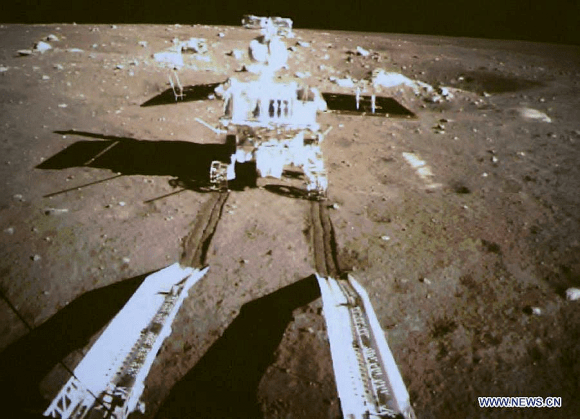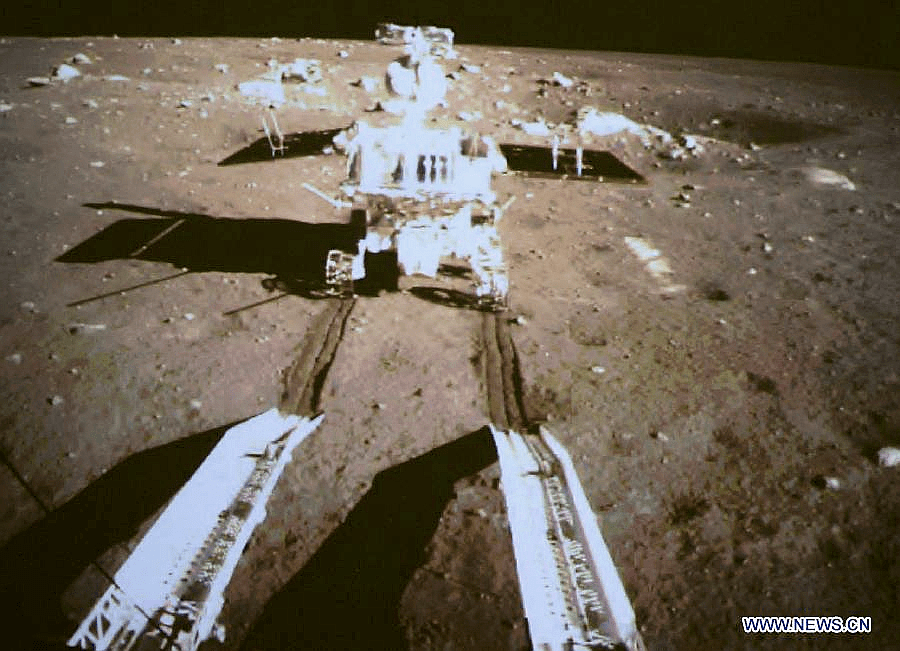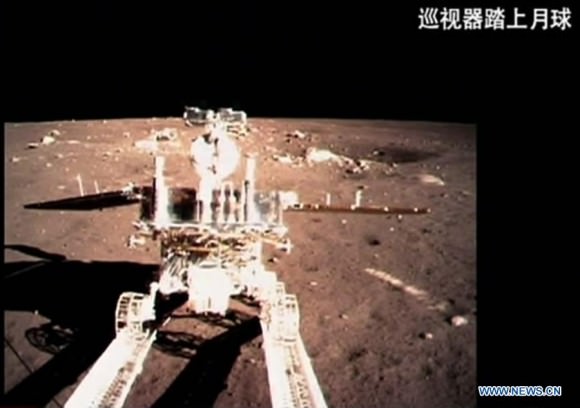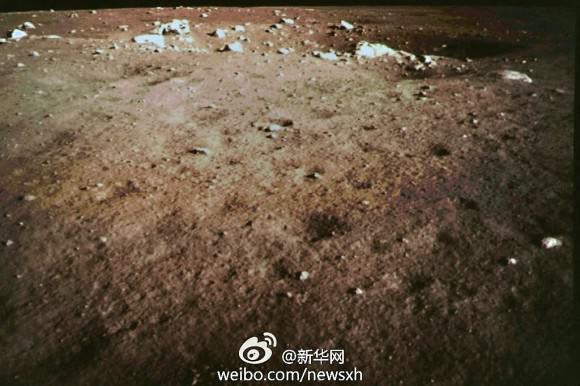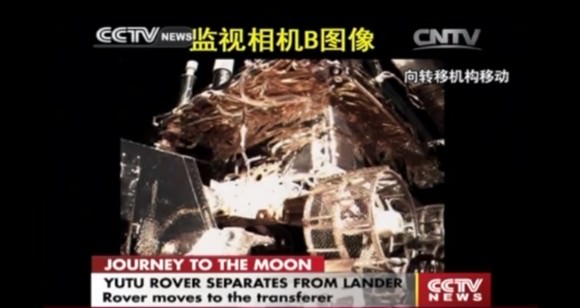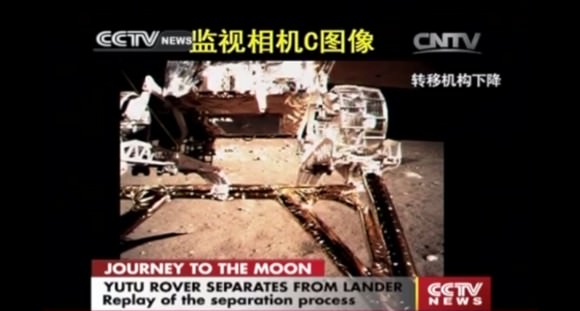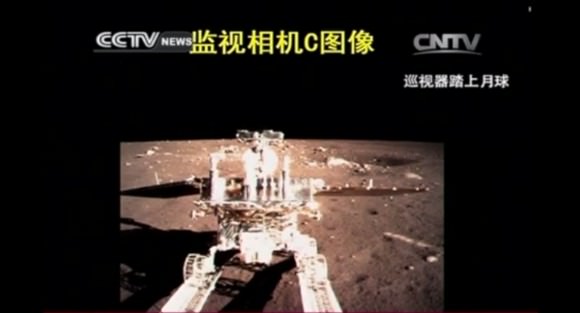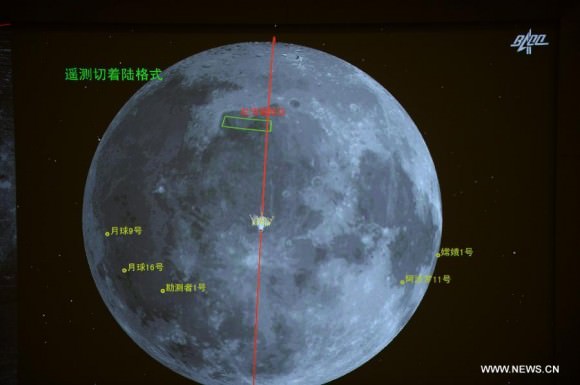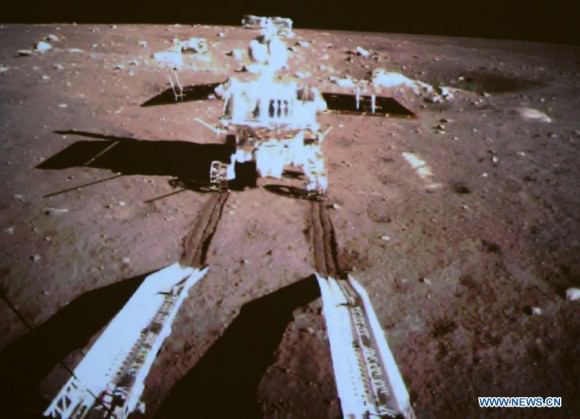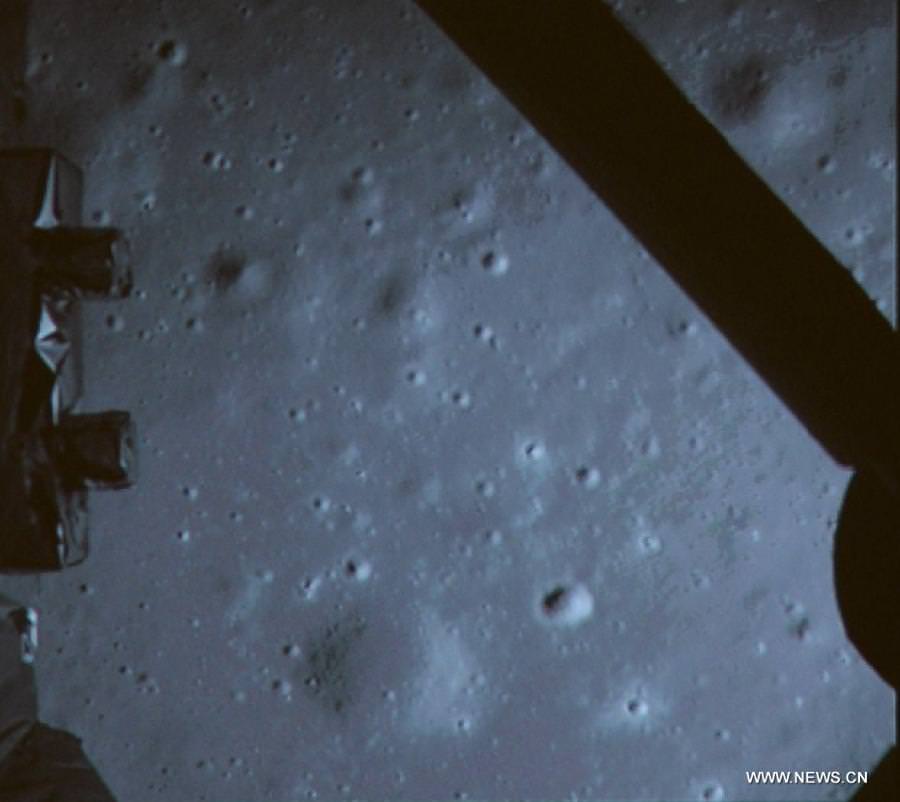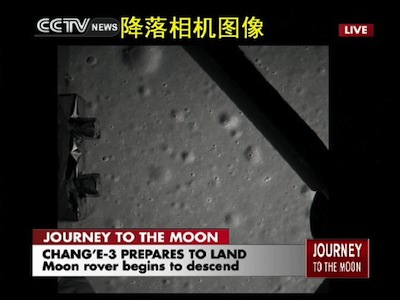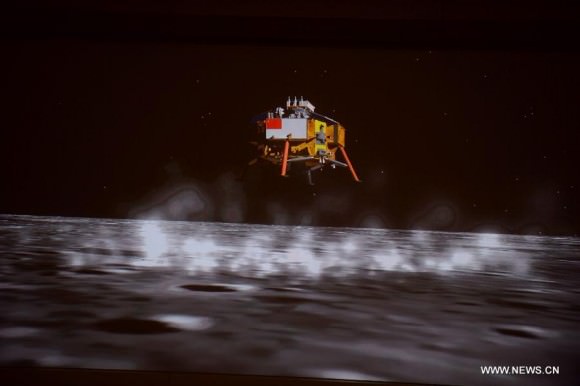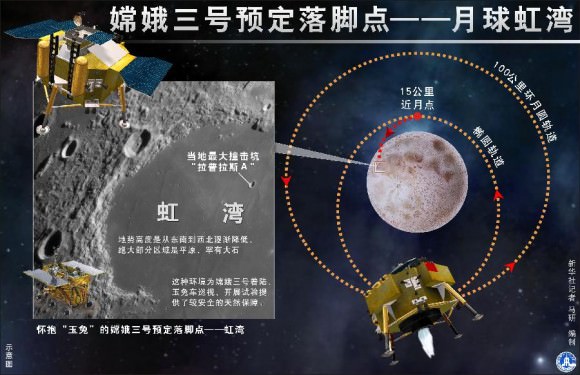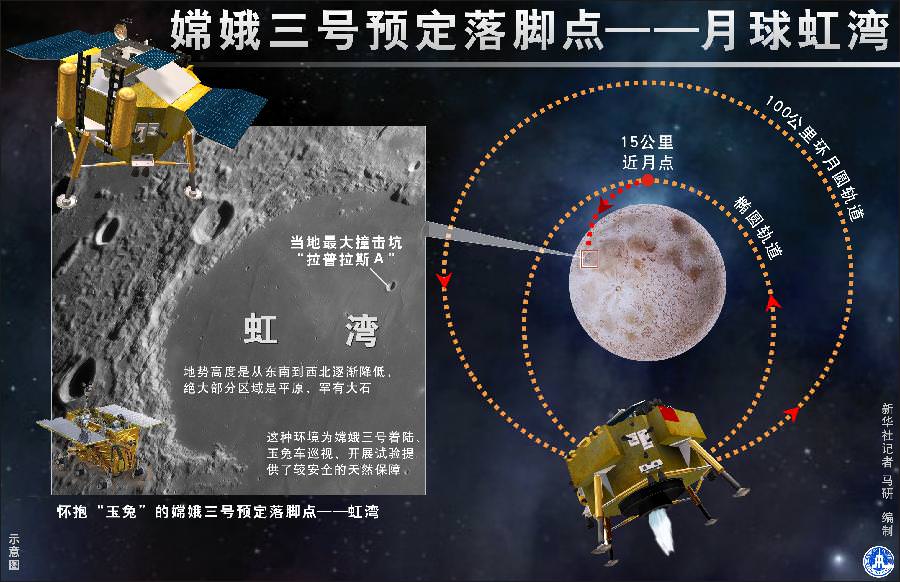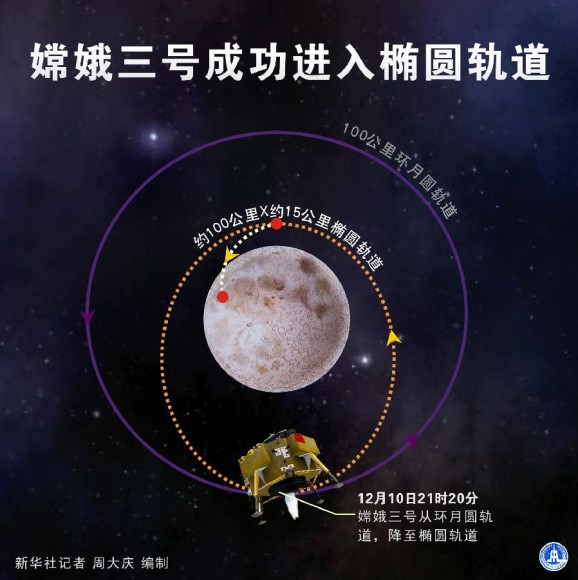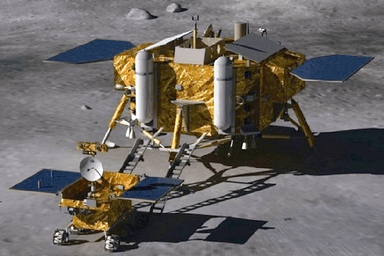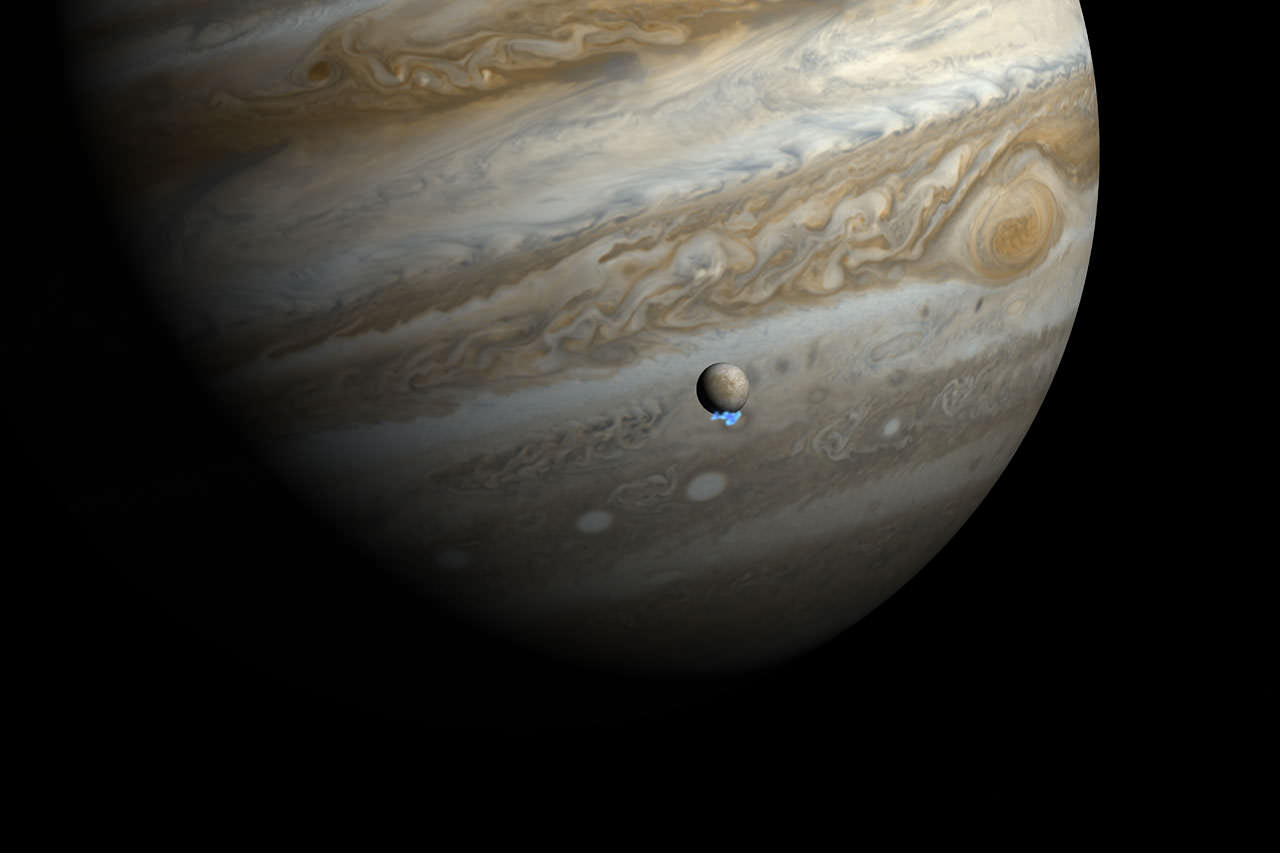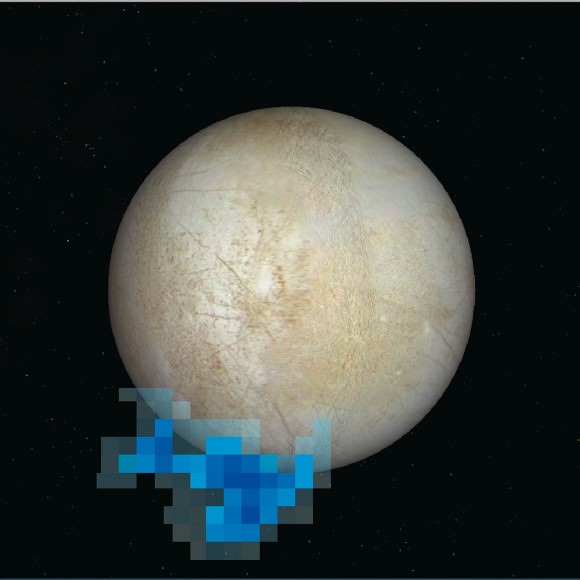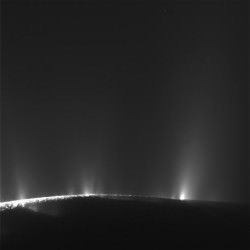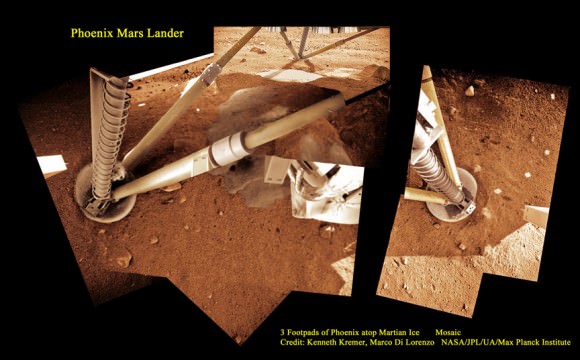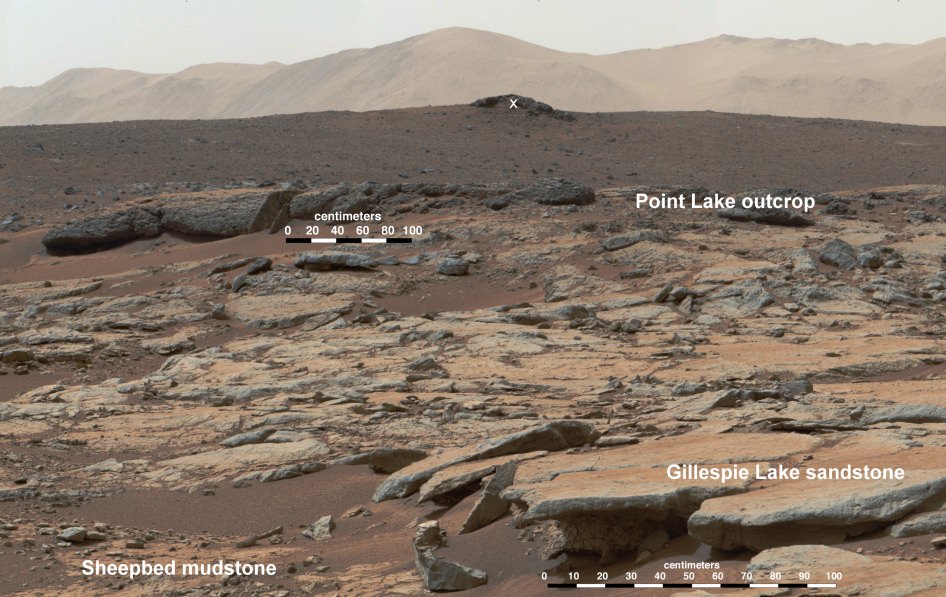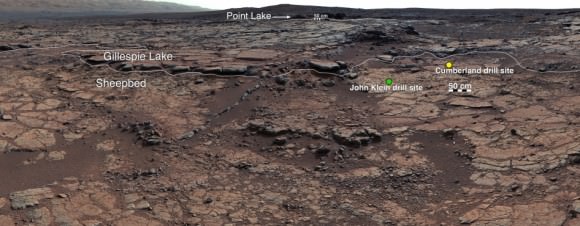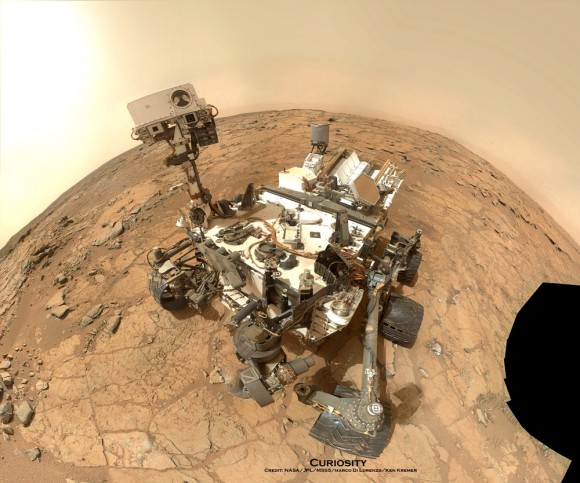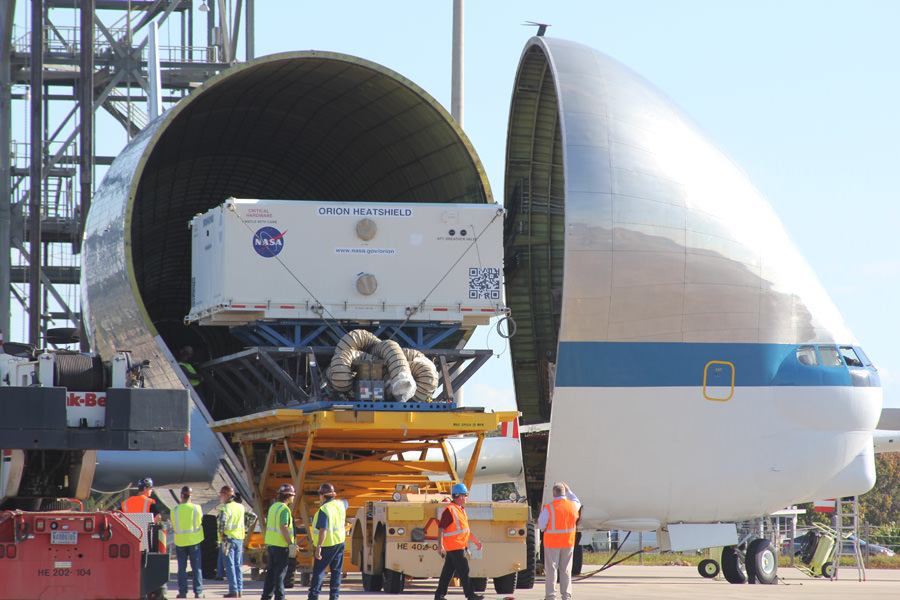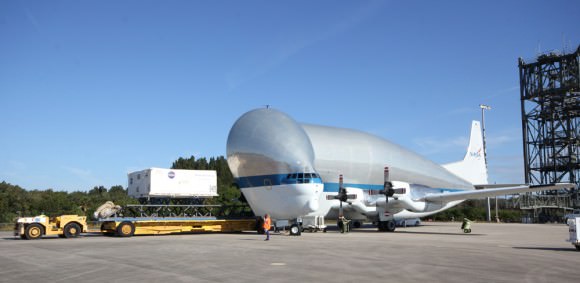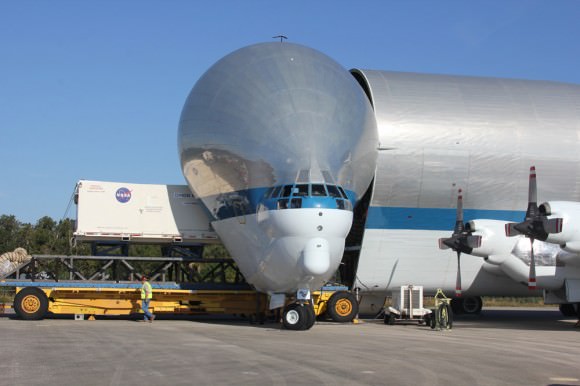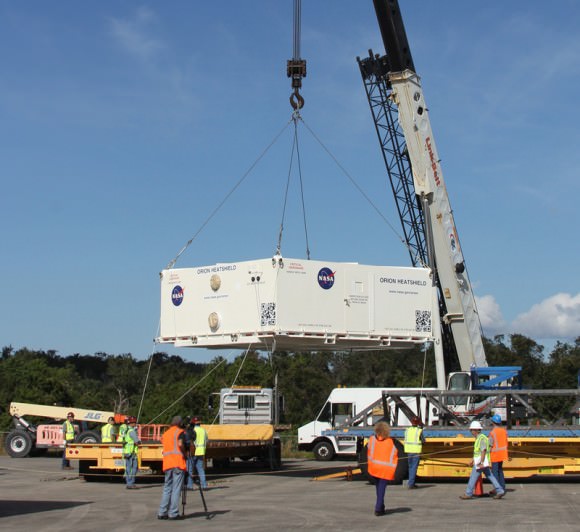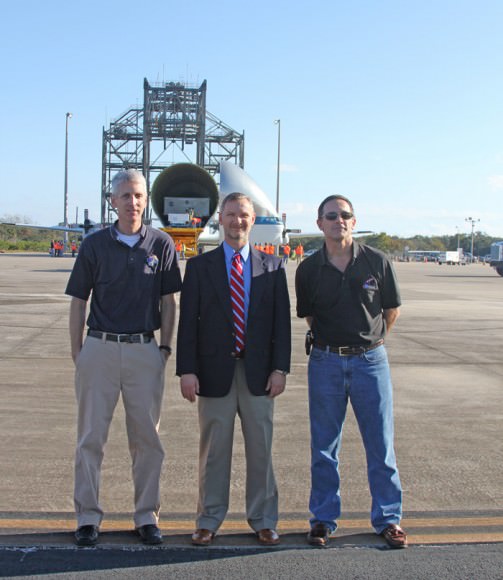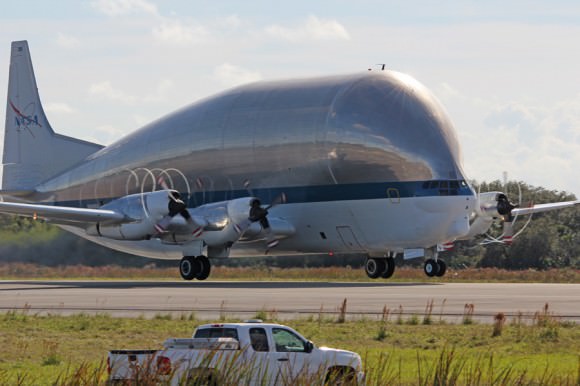Yutu rover emblazoned with Chinese Flag as seen by the Chang’e-3 lander on the moon on Dec. 15, 2013. Notice the rover tire tracks left behind in the loose lunar topsoil. Credit: China Space
Story updated[/caption]
China’s ambitious lunar space exploration program achieved another stunning success Sunday night, Dec 15, when the countries inaugural Chang’e-3 lunar lander and rover beamed back portraits of one another snapped from the Moon’s surface – that also proudly displayed the brilliant red Chinese national flag shining atop an extraterrestrial body for the very first time in human history.
“I announce the complete success of the Chang’e-3 mission,” said Ma Xingrui, chief commander of China’s lunar program, during a live CCTV broadcast as the portraits were shown to a worldwide audience from huge screens mounted at the mission control at the Beijing Aerospace Control Center (BACC) in Beijing.
Chinese President Xi Jinping was on hand to personally witness the momentous events in real time.
A wave of cheers and high fives rocked around mission control as the startling imagery of the ‘Yutu’ rover and Chang’e-3 lander nestled atop the Moon’s soil in the Bay of Rainbows was received around 11:42 p.m. Sunday, local Beijing time, 10:42 a.m. EST, via China’s own deep space tracking network.
Xi Jinping’s presence was a clear demonstration of China’s confidence in its lunar team and the importance of this space spectacular to China’s prestige and technological prowess.
China thus became only the 3rd country in the world to successfully soft land a spacecraft on Earth’s nearest neighbor after the United States and the Soviet Union.
China’s ‘Yutu’ rover had just rolled majestically onto the Moon’s soil hours earlier on Sunday, Dec. 15, at 4:35 a.m. Beijing local time – barely seven hours after the Chang’e-3 mothership touched down atop the lava filled plains of the Bay of Rainbows on Dec. 14.
The rover’s wheels left behind noticeable tire tracks as it drove across the loose lunar topsoil.
Read my earlier detailed accounts of the Dec. 15 drive by Yutu onto the lunar surface illustrated with an extensive photo gallery – here; and of the stunning Dec. 14 landing – here.
CCTV showed China’s President gleefully shaking hands and extending congratulations with many members of the mission team at BACC after seeing the high resolution photos of the Chang’e-3 rover emblazoned with China’s flag for himself.
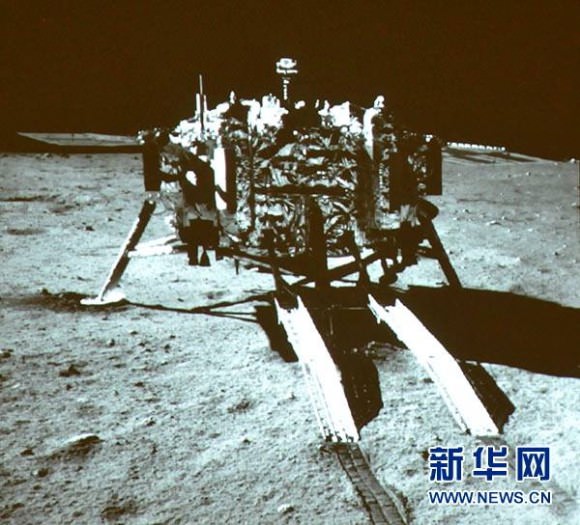
It’s been nearly four decades since the prior lunar landing was accomplished by the Soviet Union’s Luna 24 sample return spacecraft back in 1976.
America’s last visit to the Moon’s surface occurred with the manned Apollo 17 landing mission – crewed by astronauts Gene Cernan and Harrison ‘Jack’ Schmitt , who coincidentally ascended from the lunar soil on Dec. 14, 1972 – exactly 41 years ago.
“The Central Committee of the Communist Party and the Central Military Commission [responsible for China’s space program] sends congratulations to all the staff that participated in the successful completion of the mission and China’s first soft landing on the moon,” said the Chinese vice premier Ma Kai during the CCTV broadcast.
“The rover and lander are working properly and reaching the goals set.”
“Chang’e-3 is China’s most complicated space mission,” said Kai. “This shows China is dedicated to the peaceful uses of space.”
“There are many more complicated and difficult tasks ahead.”
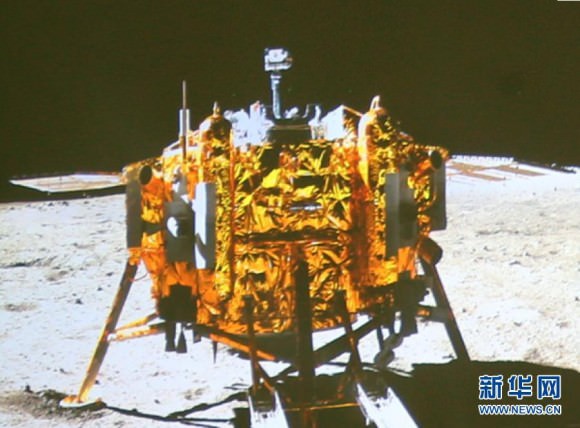
Indeed so far the Chang’e-3 mission has been primarily a highly successful demonstration of the extremely challenging engineering required to accomplish China’s first lunar landing.
Now the science phase can truly begin.
Over 4600 images have already been transmitted by Chang’e-3 since the Dec. 14 touchdown.
After rolling all six wheels into the dirt, Yutu – which translates as Jade Rabbit – drove to a location about nine meters north of the lander, according to CCTV commentators.
The rover then turned around so that the red Chinese flag emblazoned on the front side would be facing the lander’s high resolution color cameras for the eagerly awaited portraits of one another.
Yutu is nearly the size of a golf cart. It measures about 1.5 m x 1 m on its sides and stands about 1.5 m (nearly 5 feet) tall – nearly human height.
The 120 kg Yutu rover will now begin driving in a circle around the right side of the 1200 kg Chang’e-3 lander – for better illumination – at a distance ranging from 10 to 18 meters.
The rover will snap further photos of the lander as it traverses about from 5 specific locations – showing the front, side and back – over the course of the next 24 hours.
See the accompanying graphic – written in Chinese.
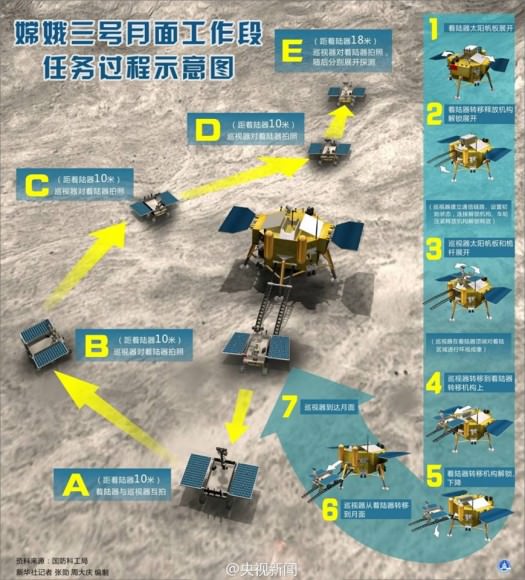
Thereafter Yutu will depart the landing site forever and begin its own lunar trek that’s expected to last at least 3 months.
So the rover and lander will soon be operating independently.
They are equipped with eight science instruments including multiple cameras, spectrometers, an optical telescope, ground penetrating radar and other sensors to investigate the lunar surface and composition.
The radar instrument installed at the bottom of the rover can penetrate 100 meters deep below the surface to study the Moon’s structure and composition in unprecedented detail, according to Ouyang Ziyuan, senior advisor of China’s lunar probe project, in an interview on CCTV.
A UV camera will study the earth and its interaction with solar wind and a telescope will study celestial objects. This is done during the lunar day.
It will also investigate the moon’s natural resources for use by potential future Chinese astronauts.
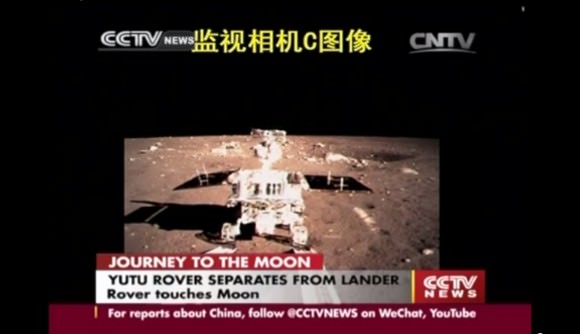
The two probes are now almost fully operational. Most of the science instruments are working including at least three cameras and the ground penetrating radar.
And although they have survived the harsh lunar environment thus far, they still face massive challenges. They must prove that they can survive the extremely cold lunar night and temperature fluctuations of more than 300 degrees Celsius – a great engineering challenge.
The rover will hibernate during the two week long lunar night.
A radioisotopic heater will provide heat to safeguard the rovers computer and electronics – including the alpha particle X-ray instrument on the rover’s robotic arm.
The Bay of Rainbows, or Sinus Iridum region, is located in the upper left portion of the moon as seen from Earth. You can see the landing site with your own eyes.
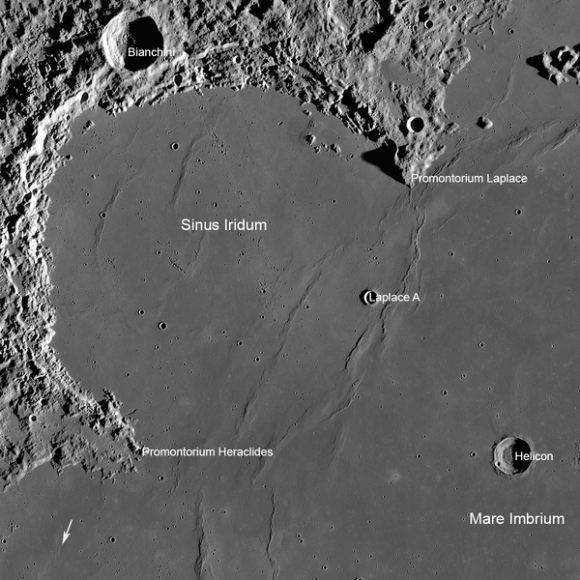
It was imaged in high resolution by China’s prior lunar mission – the Chang’e-2 lunar orbiter and is shown in graphics herein.
China’s Chang’e-3 probe joins NASA’s newly arrived LADEE lunar probe which entered lunar orbit on Oct. 6 following a spectacular night time blastoff from NASA’s Wallops Flight Facility in Virginia.
Stay tuned here for Ken’s continuing Chang’e-3, LADEE, MAVEN, MOM, Mars rover and more news.
